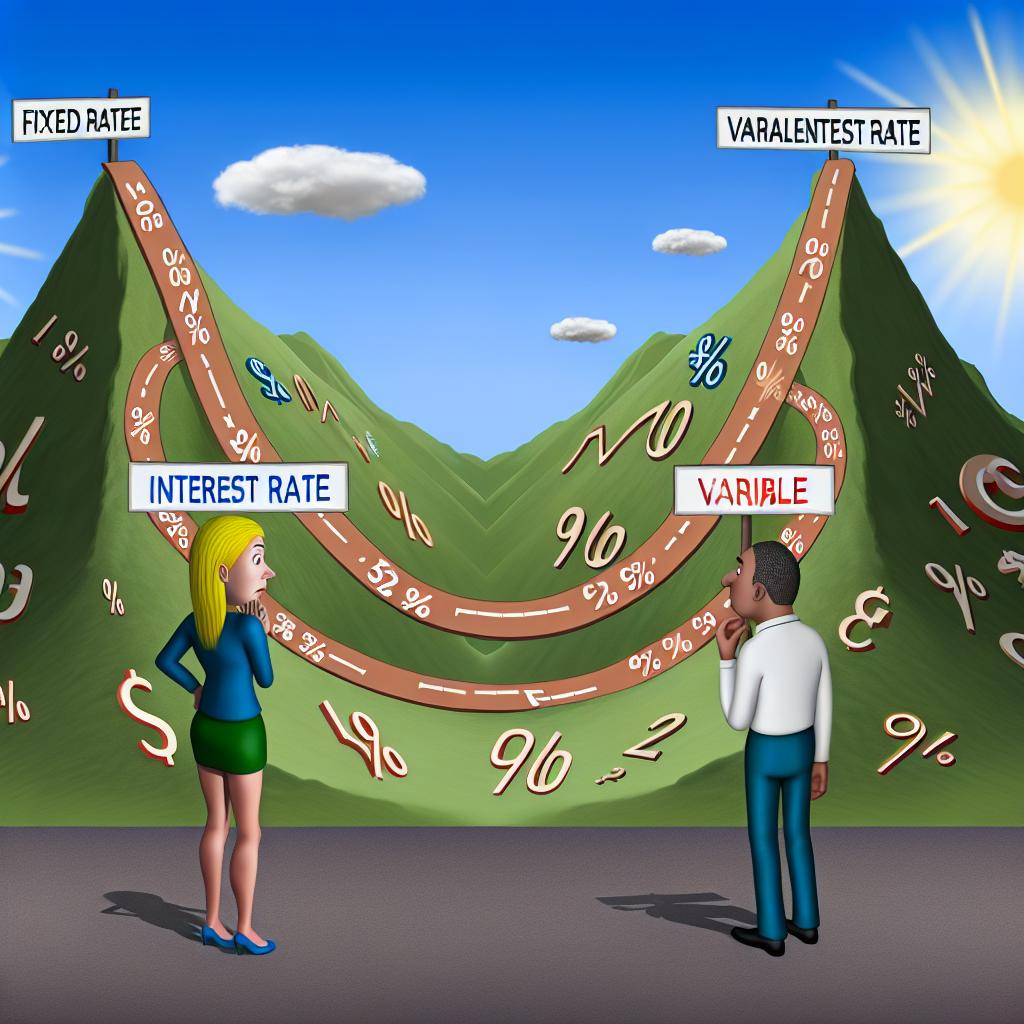Introduction to Interest Rates
When engaging in financial transactions such as borrowing money or investing, the significance of understanding interest rates becomes evident. Interest rates play a crucial role in determining the cost of borrowing or the return on investment. Two of the most prevalent types of interest rates that individuals encounter are fixed and variable interest rates. Developing a clear understanding of the distinction between these two can assist individuals in making well-informed financial decisions that align with their goals.
Fixed Interest Rates
A fixed interest rate remains unchanged over the entire duration of a loan or investment. Regardless of the time frame—be it five, ten, or thirty years—the rate is invariant and immune to fluctuations associated with changes in market conditions. This stability enables borrowers and investors to accurately predict their payments or returns, which in turn provides a sense of financial stability.
Advantages of Fixed Interest Rates:
The primary benefit associated with fixed interest rates is their inherent predictability. Borrowers are afforded the ability to plan their finances without the concern of future rate increases. This stability is particularly valuable during periods of economic uncertainty or when interest rates are on the rise. Fixed rates provide a consistent payment schedule, making it easier for individuals to manage their monthly budgets without anxiety about unexpected financial changes.
Disadvantages of Fixed Interest Rates:
Despite the predictability they offer, fixed interest rates may initially be set higher than variable rates, especially during times when market interest rates are low. Consequently, borrowers might miss opportunities for potential savings when market rates decrease significantly. This potential for missed savings necessitates a careful consideration of the current economic environment and personal financial situation when choosing a fixed rate.
Variable Interest Rates
A variable interest rate, also known as a floating rate, possesses the ability to change over the life of a loan or investment. These rates are generally linked to a specific index or benchmark, such as the prime rate. As the index fluctuates, the interest rates adjust accordingly.
Advantages of Variable Interest Rates:
Variable interest rates frequently commence at a lower point compared to fixed rates. If market rates either remain stable or decrease, borrowers and investors stand to benefit from reduced payments or enhanced returns. Over time, this can translate into substantial savings, making variable rates an attractive option for those willing to embrace some uncertainty.
Disadvantages of Variable Interest Rates:
The most significant drawback associated with variable interest rates is their unpredictability. Should market rates increase, the costs borne by the borrower may also rise. This unpredictability can complicate budgeting efforts and potentially impose financial strain during periods marked by rising interest rates. Hence, individuals opting for variable rates should assess their capacity to absorb potential increases in financial obligations.
Choosing Between Fixed and Variable Interest Rates
The decision to opt for fixed or variable interest rates hinges on an individual’s personal financial circumstances, tolerance for risk, and prevailing economic conditions. Those who prioritize stability and predictability may find a fixed rate to be the most suitable choice. However, individuals comfortable with accepting some level of risk might discover that variable rates offer greater benefits, particularly when indicators suggest the possibility of declining market rates.
Final Considerations
Prior to arriving at a decision between fixed and variable interest rates, it may be advantageous to consult with a financial advisor or to undertake comprehensive research regarding current market trends. Numerous online financial tools and resources are available to offer additional insights into present rate conditions and future projections. For those seeking more in-depth information on interest rate predictions and analyses, visiting financial news websites can prove to be valuable in gaining perspective.
In summary, comprehending the nuances of fixed and variable interest rates is vital for anyone involved in borrowing or investing. The choice between these two types of rates can significantly impact one’s financial journey, and making an informed decision requires careful consideration of personal financial goals and existing economic conditions. Understanding the advantages and disadvantages of each type of rate will empower individuals to tailor their financial strategies to best suit their needs.

